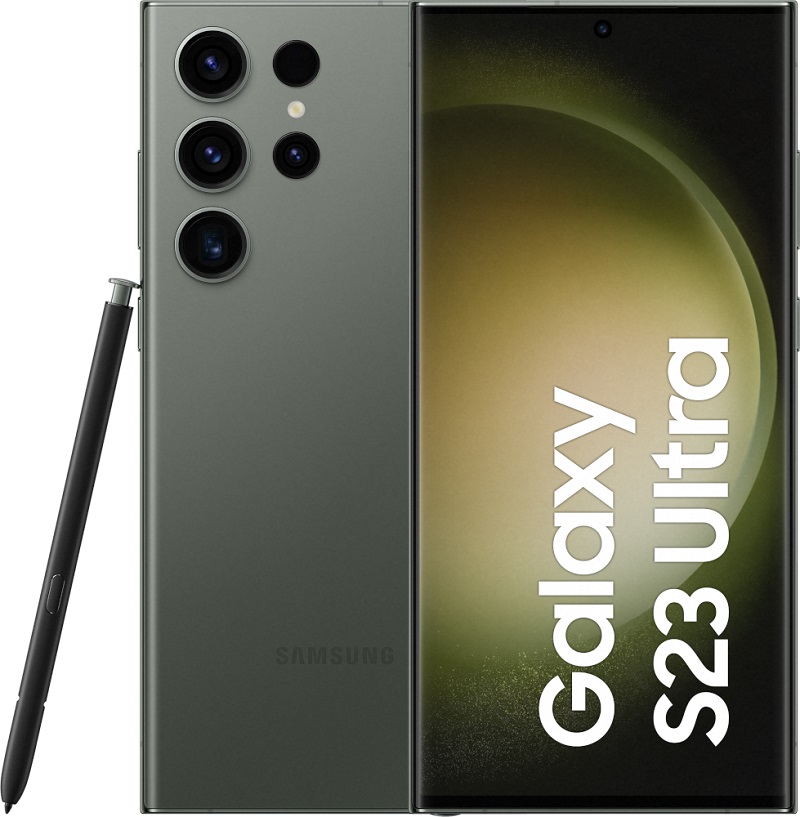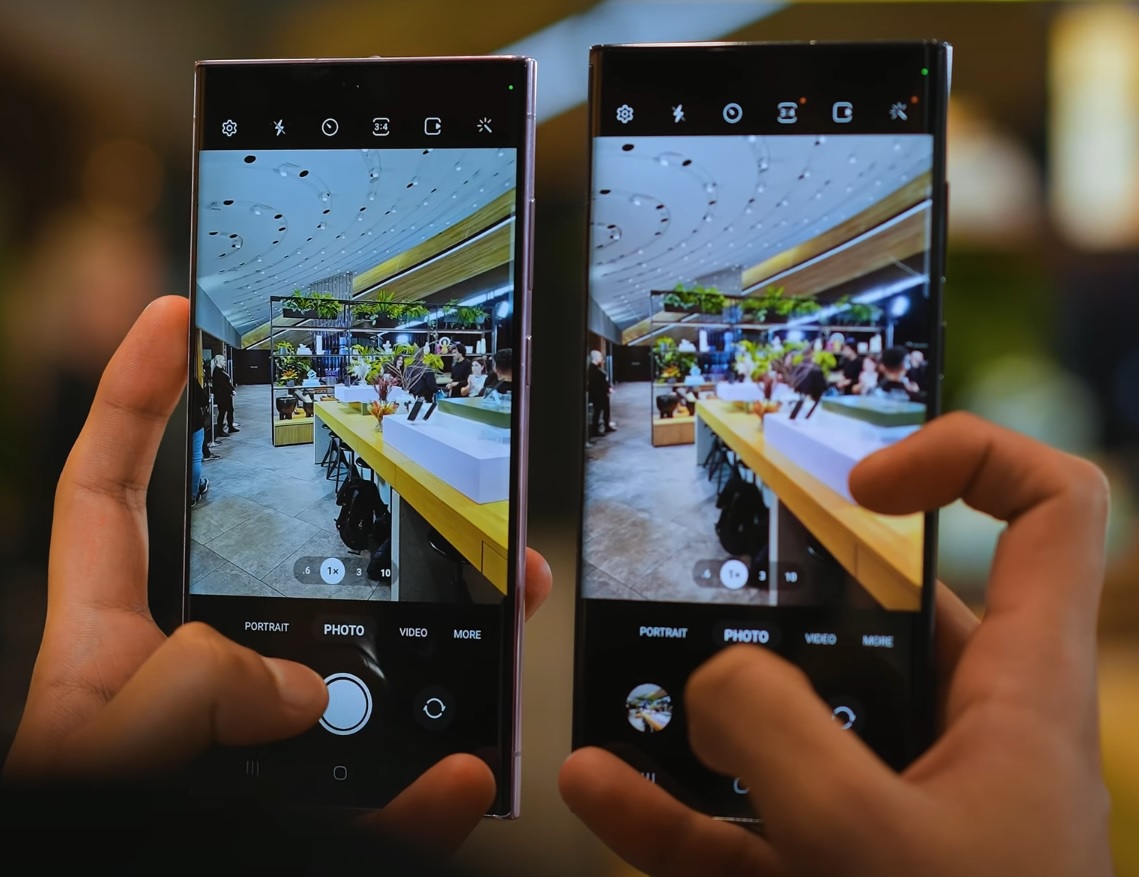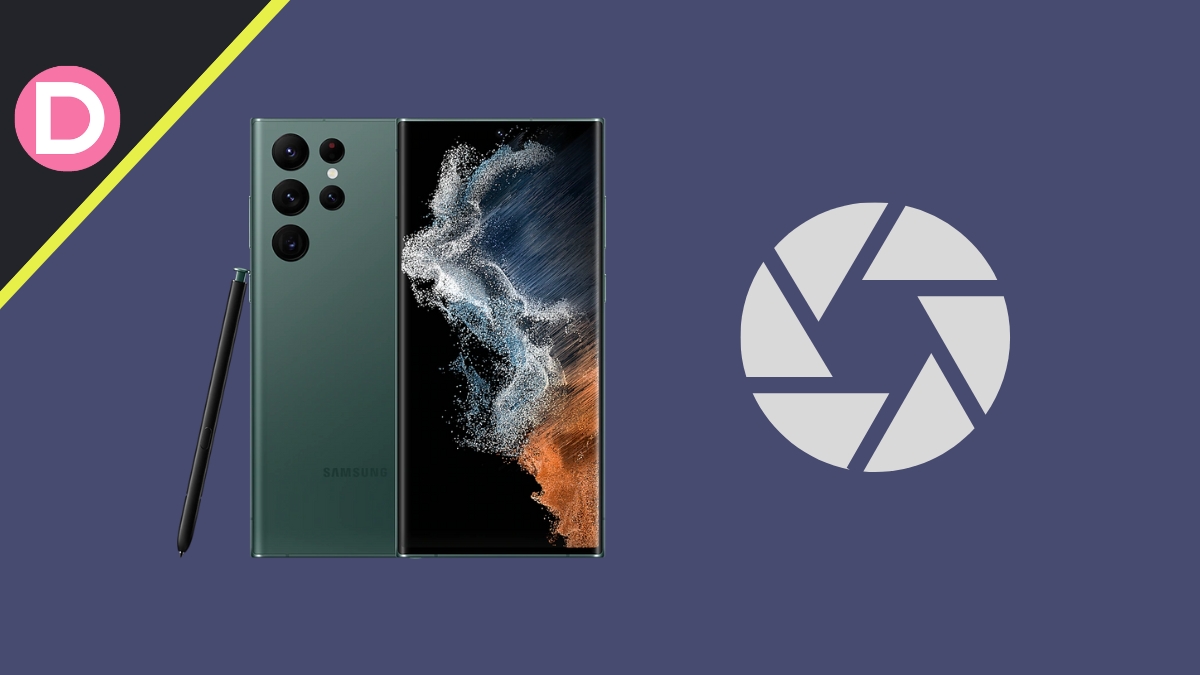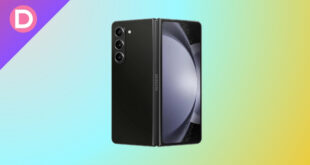Samsung’s flagship phones have some of the best camera systems. People love their color science and zoom range. Overall, their cameras have a good combination of versatility and reliability.
However, many Samsung phones capture photos longer if you compare them to the competition. Capture time is in milliseconds, and Samsung typically exposes its lenses to light for a longer time.
With smartphone cameras, the software chooses between shutter speed and ISO. The ISO value determines your camera’s sensitivity to light. Shutter speed, aperture value, and ISO form a triquetra for photography.
Artificially intelligent algorithms constantly choose between high ISO and fast shutter speed or lower ISO and slower shutter speed.
If the camera captures images with lightning-fast speeds but compensates with higher ISO, it’ll mess up the brightness and exposure of the shot if post-processing cannot compensate for it.
We see this trend with iPhones. Their cameras capture photos nearly twice as fast as the Samsung offerings, and they try to compensate with a higher ISO. This results in unnecessarily bright images with clipped highlights.
High Dynamic Range is difficult to do if the capture time is speedy, and considering the load of HDR issues we see with iPhones, we could argue that their faster shutter speeds are partly responsible.
Samsung’s Galaxy S23 Ultra has a new 200MP HP2 sensor, and it does 16-in-1 pixel binning for a 12.5MP output. In the default mode, it groups a cluster of 16 pixels into one large pixel for better details.
Samsung exposes the sensor to light for a longer time and cleans up the image in post-processing. Photos have organic detail and definition and impressive dynamic range as a result.

What is the difference between Shutter Lag and Shutter Speed?
The sensor is first exposed to light when you tap the shutter button. Then, the phone performs all the necessary calculations, like focusing, exposure calculation, releasing the shutter, and recording the image.
The time taken for the phone to record the image once you press the shutter button is called shutter lag. Shutter speed is entirely different.
Shutter speed and exposure time refer to the same thing, and you can manually adjust that. However, there’s nothing you can do about Shutter lag.
If you take a photo and your device has a shutter lag of over one second, then the photo you think you got is not the photo you actually got. This is a major problem if the subject is already out of the frame when the phone records the image.
Exposing the sensor to light for an extended time has many advantages. It’s much easier to do multi-stack HDR processing. The amount of detail significantly increases since the sensor receives more photons.
As a result, the image is going to look much brighter. However, it’s a major problem if you frequently take pictures of kids, pets, or other fast-moving subjects. If you take photos inside a fast-moving car, you’ll end up with motion blur.
A slower shutter speed is responsible for motion blur, and that’s the problem that the S22 Ultra faces with action shots and moving subjects. The S22 Ultra and many previous Samsung phones had this problem, too.
It’s interesting to note that Samsung also has a shutter lag issue, where the image isn’t recorded fast enough when you tap the shutter button. A combination of slow exposure time and shutter lag makes Samsung phones weak at action shots.
Does the S23 Ultra have camera shutter lag?
There are many videos about the camera system of the S23 Ultra. We can tell from various sources on YouTube that the S23 Ultra still has shutter lag. Hence, we can assume there’s still a noticeable delay between when you tap the shutter button and when the phone records the image.
Mrwhosetheboss says that the S23 Ultra camera capture time is better than the S22 Ultra, but he didn’t share too many details. While being faster than the S22 Ultra, it’s still not fast enough for action shots or moving subjects. However, MKBHD said the S23 camera shutter lag is still there.

SuperSaf has a detailed video about the S23 Ultra’s camera system against the iPhone 14 Pro Max. The iPhone has noticeably less shutter lag and also captures photos with a faster exposure time. You don’t get motion blur even with high-speed subjects.
We’ll preface this because the S23 Ultra is still in beta software. It is the only one that just came out, and we haven’t yet received any major optimization updates to improve its performance.
Since the phone has a new 200MP sensor, it’s impressive that it captures photos slightly faster than the S22 Ultra despite being much more technical and capturing more details.
If we judge the camera system from the existing software, it has problems with slow exposure time and shutter lag. This could massively improve when Samsung fully optimizes the software for the 200MP sensor.
With updates, Samsung could improve the shutter lag, but they can do many things to improve the shutter speed. Artificial Intelligence and Scene detection in 2023 has become very reliable and advanced.
If the phone detects gusts of wind, fast-moving subjects like pets and kids, etc., it can automatically boost ISO, capture with a fast shutter speed, and clean up in post-processing. The end output will look much better than a blurry shot that’s out of focus.
Did Samsung do anything to improve its camera experience?
With the new HP2 sensor, individual pixels gather more light before closing up. Photos in brightly lit environments will look much better because of Dual Vertical Transfer Gate technology.
Samsung placed a voltage transfer gate at the bottom for faster and more accurate electron transfer. Signal transfer is much faster, enabling much better dynamic range and avoiding overexposure or underexposure.
The much faster and more reliable autofocus is a notable hardware improvement for the HP2 sensor. Repeatable and consistent autofocus is necessary if you want your phone to have a reasonable shutter speed.
A significant reason why the S23 Ultra captures photos slightly faster is the new Super QPD technology. The new sensor identifies pattern changes both horizontally and vertically. This enables much quicker autofocus reliability and speed.
This creates a rich data pattern with great reference points. Focusing speeds, especially in low light, will see major improvements.
Samsung made many hardware-based improvements to improve the overall camera experience. However, they didn’t particularly pay attention to shutter speed and lag.
Samsung also made improvements to capturing time in the full 200MP mode and the 50MP mode. We have to wait for further optimization updates since opinions on the internet are very conflicting.
How to fix a slow shutter speed?
If your device has problems with exposure time and captures for too long, you can always adjust that with the Pro mode. Select a slightly faster shutter speed and compensate for it with a higher ISO.
If you don’t want to tinker with pro mode, you can try to take a Motion Photo. It’s an image that moves, and this automatically fixes any concerns with motion blur.
Using the Camera Assistant module on Goodlock, you can turn on the Faster Shutter option. This automatically reduces exposure time, making the shutter speed faster.
Note that this could cause your photos to lack detail and brightness, but at least they won’t be blurry. Some people suggest using burst mode to capture multiple images with a high shutter speed, but that might or might not help if there’s a shutter lag problem.
Samsung made many improvements to its past weaknesses with the S23 Ultra. The video quality, especially in low light, looks much better. The photos have much more detail, and the performance is way better, thanks to the 8 Gen 2.
We hope they address the problems with shutter speed and shutter lag with future OTA updates since that’ll make this camera system unbeatable.
Conclusion
Nearly all the assumptions made in this article are based on initial impressions from tech reviewers. We haven’t seen the phone get enough updates yet, and it’s not optimized fully to take advantage of the hardware.
Samsung needs to address this problem since shutter speed problems could act as deal-breakers for those who take a lot of action shots.
So, we recommend taking the initial reports with a pinch of salt for now. We’ll wait for all the embargos to lift for more conclusive answers. We’ll update this article if there’s anything worth mentioning about the shutter lag.



